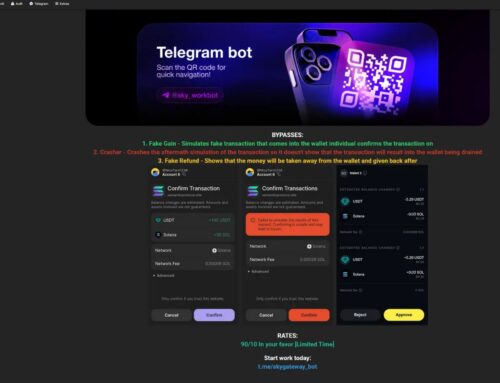
UNC1549 Hackers with Custom Tools Attacking Aerospace and Defense Systems to Steal Logins
The global aerospace and defense sectors are under siege from a highly sophisticated, Iranian-backed threat group known as UNC1549. Since mid-2024, this advanced persistent threat (APT) has been meticulously crafting campaigns to infiltrate critical systems and pilfer valuable login credentials. Their tactics represent a significant escalation in cyber warfare, targeting organizations vital to national security and innovation worldwide.
UNC1549’s Dual-Pronged Attack: Phishing and Supply Chain Exploitation
UNC1549’s modus operandi is characterized by a dual-pronged attack strategy designed to maximize their chances of success. They combine two potent methods:
- Targeted Phishing Campaigns: These are not your typical mass-market phishing attempts. UNC1549 crafts highly personalized and technically convincing phishing emails, often leveraging social engineering to trick employees into revealing sensitive information or executing malicious code. These campaigns are tailored specifically to the target organization and individual roles within it, increasing their efficacy.
- Supply Chain Compromise: A more insidious aspect of their strategy involves exploiting trusted connections between primary aerospace and defense targets and their third-party suppliers. By compromising a smaller, less-secure vendor, UNC1549 gains a backdoor into the larger, more robustly defended primary target. This highlights a critical vulnerability in modern supply chains, where the security posture of the weakest link can dictate the overall resilience of the entire ecosystem.
The Scope of the Threat: Aerospace, Aviation, and Defense
The targeting by UNC1549 is highly specific, focusing on sectors that hold immense strategic value and intellectual property:
- Aerospace: This includes manufacturers, research institutions, and organizations involved in space exploration and satellite technology.
- Aviation: Airlines, air traffic control systems, and associated service providers are all potential targets.
- Defense: Military contractors, government defense agencies, and research and development entities are explicitly in UNC1549’s crosshairs.
The objective behind these attacks is primarily the theft of login credentials. Compromised credentials can grant threat actors access to a wide array of systems, from internal networks and email servers to proprietary data repositories and intellectual property, enabling further lateral movement and data exfiltration.
Custom Tools: A Hallmark of Sophistication
A key indicator of UNC1549’s advanced capabilities is their reliance on custom tools. While the specific nature of these tools isn’t fully detailed in public reporting, the use of proprietary malware and exploitation frameworks allows them to:
- Evade Detection: Custom tools are less likely to be recognized by traditional antivirus and endpoint detection and response (EDR) solutions that rely on known signatures.
- Tailor Attacks: They can fine-tune their exploits to specific target environments, increasing the success rate of their attacks.
- Maintain Persistence: Custom backdoors and implants can be designed for long-term presence within compromised networks, allowing for prolonged espionage and data collection.
The development and deployment of such specialized tooling signify a well-resourced and dedicated threat actor.
Remediation Actions and Mitigations
Organizations within the aerospace, aviation, and defense sectors, along with their supply chain partners, must implement robust cybersecurity measures to defend against UNC1549 and similar APT groups. Here are critical remediation actions:
- Strengthen Phishing Defenses:
- Implement advanced email filtering and anti-phishing solutions.
- Conduct mandatory and frequent cybersecurity awareness training, including realistic simulated phishing exercises, for all employees.
- Educate employees on identifying social engineering tactics.
- Implement Multi-Factor Authentication (MFA):
- Mandate MFA for all user accounts, especially for remote access, VPNs, and cloud services. This is perhaps the single most effective defense against credential theft.
- Secure the Supply Chain:
- Conduct thorough security assessments and audits of all third-party vendors and suppliers.
- Implement strict contractual cybersecurity requirements for suppliers.
- Minimize access privileges granted to third parties and monitor their activities closely.
- Endpoint Detection and Response (EDR) and Extended Detection and Response (XDR):
- Deploy EDR/XDR solutions across all endpoints to detect and respond to unusual activity, even from custom tools.
- Regularly update and patch these systems.
- Network Segmentation:
- Isolate critical systems and data repositories through network segmentation to limit lateral movement in case of a breach.
- Vulnerability Management and Patching:
- Regularly scan systems for vulnerabilities and apply patches promptly. Pay particular attention to publicly disclosed weaknesses, though no specific CVEs are attributed to UNC1549’s custom tools in the provided information.
- Incident Response Plan:
- Develop and regularly test a comprehensive incident response plan to ensure rapid detection, containment, and recovery from a cyberattack.
- Threat Intelligence Sharing:
- Actively participate in industry-specific threat intelligence sharing initiatives to stay informed about emerging threats and attacker tactics.
Conclusion
The ongoing campaigns by UNC1549 underscore the persistent and evolving threat landscape facing critical infrastructure and high-value industries. Their sophisticated approach, combining targeted phishing with supply chain exploitation and custom tooling, demands a proactive and multi-layered defense strategy. Organizations must prioritize robust security measures, including comprehensive employee training, strong authentication protocols, and rigorous third-party risk management, to safeguard their systems and vital national interests against these determined adversaries.





